According to an old Chinese history text, The Wei Chronicle, there was
a country called Itokou in Itoshima city 2000 years ago and it adopted
the rich foreign culture by trading with China and Korea peninsula.
Eventually, the culture has flourished. Starting with a tomb of a king,
there are now many ancient tombs such as shrines and temples.
Itoshima is basically rich in cultural assets and historic places. |
| Itokoku Museum of History |
If you come here, you could know everything about Itokoku.
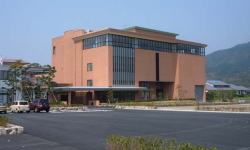 Itokoku Museum of History has many cultural assets which were discovered
among relics and they are considered coming from Yayoi Period mainly. Itokoku Museum of History has many cultural assets which were discovered
among relics and they are considered coming from Yayoi Period mainly.
The national treasures, for example, which include 40 bronze mirrors, iron
swords and pierced earrings (they were designated as national treasures
simultaneously in 2006) were unearthed from the government-designated dig
at ruins “Hirabaru-monument” (It was constructed about 1800 years ago).
They are particularly worth seeing.
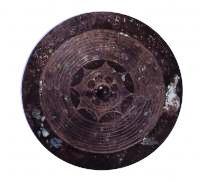 In addition to the above mentioned national treasures, there are many articles
in the permanent exhibition room on the third floor such as a full-scale
model (which makes a copy of the state of excavating the mirror from Hirabaru
monument), a jar casket ( which was made 2000 years ago and discovered
from Mikumominamishoji), ornamental clasps and gems. Those articles indicate
prosperity of the ancient state of “Itokoku”( It was a center in Yayoi
era). Furthermore, it shows the earlier trades and exchanges between China
and Korean Peninsula. In addition to the above mentioned national treasures, there are many articles
in the permanent exhibition room on the third floor such as a full-scale
model (which makes a copy of the state of excavating the mirror from Hirabaru
monument), a jar casket ( which was made 2000 years ago and discovered
from Mikumominamishoji), ornamental clasps and gems. Those articles indicate
prosperity of the ancient state of “Itokoku”( It was a center in Yayoi
era). Furthermore, it shows the earlier trades and exchanges between China
and Korean Peninsula.
“Special exhibition” based on a concrete theme is hold quarterly in the
special exhibition room on the first floor. There are sightseeing spaces
for overlooking broad Itoshima plain field and screen image spaces for
explaining the cultural assets to children.
|
| Address |
916 Ihara Itoshima city |
| Hours |
9:00 A.M. to 5:00 P.M. |
| Information |
092-332-7083 (Itokoku Museum of History) |
| Closed |
Mondays and New Year’s Holidays
(or the following day if Monday falls on a holiday)From 10:00 P.M. to 5:00
A.M. |
| Chagres |
General 210yen High school students 100yen
(Group – 20 or more: General 100yen High school students 50yen)
- For junior high and elementary school students, person ages 65 and above,
a person who has a physical disability certificate and a helper: Admission
is for free.
- Charges are subject to change during the period such as the special exhibition.
|
| Access to Itokoku Museum of History |
- -By private car
From Fukuoka City – Fukuoka urban express way (Exiting Imajuku), passing
Route 202 bypass and turning left at the intersection of Iiji, and going
straight for 8 min.
- -By train and taxi
JR Chikuhi line - Susenji station:
taxi fare to Itokoku Museum of History is about 1600yen.
- Hatae station :
taxi fare to Itokoku Museum of History is about 1300yen.
- - By train and bus
JR Chikuhi line – Hatae station (west exit) :
Please take a bus to Zuibajisen-iwarayama-iriguchi
and drop off at Itokoku-rekishi-hakubutsukan-mae bus stop
(a one way fare cost: 260yen)
-Susenji station :
Please take a bus to Kawabarusen-kawabaru,
drop off at Takasu bus stop and walk 10-min from there.
|
|
|
| Sakurai Shrine |
A cultural property with approximately 400 years of history
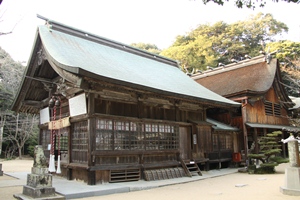 Sakurai Shrine was constructed in 1632 by the Lord of the Fukuoka Clan,
and was the base of religion in Chikuzen Country. Even today, it is worshiped
as the guardian deity of Chikuzen. Sakurai Shrine was constructed in 1632 by the Lord of the Fukuoka Clan,
and was the base of religion in Chikuzen Country. Even today, it is worshiped
as the guardian deity of Chikuzen.
The main shrine is decorated with colorful ornaments and is a cultural
property designated by Fukuoka Prefecture as well as its front shrine and
tower gate, which were built around the same time. 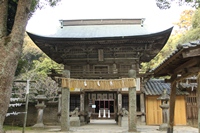
The Grand Shrine is located in the mountains and deeply connected to Ise
Shrine. It is built using the oldest traditional architectural style, characterized
by straight lines.
|
| Location |
4227 Shima Sakurai, Itoshima City |
| Inquiry |
092-327-0317 (Sakurai Shrine) |
| Access |
15 to 20 minutes by car from JR Imajuku Station or JR Chikuzen Maebaru
Station. Get off at Sakurai bus stop if taking Showa Bus. |
|
|
| Shima Museum of Historical Material |
|
Exhibition on history of exchanges within the Asian Continent
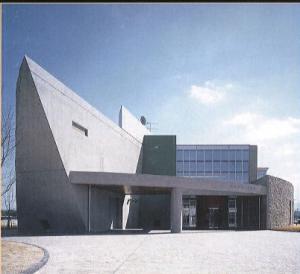 From the ancient days, Itoshima Peninsula sticking out to the Sea of Genkai,
had active exchanges with other regions across the sea, such as trading
with the Asian Continent and Korean Peninsula. Thus a number of relics
and remains related to the ocean have been found. From the ancient days, Itoshima Peninsula sticking out to the Sea of Genkai,
had active exchanges with other regions across the sea, such as trading
with the Asian Continent and Korean Peninsula. Thus a number of relics
and remains related to the ocean have been found.
In the regular exhibition room, this “Ocean” is described in 8 themes;
housing, life, trading, religion, fishery, reclamation, production and
tomb. They are displayed using simple terms and models so that even elementary
school students can understand.
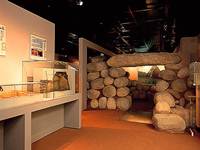 From the observation room, you can enjoy the seasonal scenery of Shima,
with the sweeping view of “Mt. Kaya” (known as “Itoshima Fuji” for its
beauty) and “Mt. Hiyama”. From the observation room, you can enjoy the seasonal scenery of Shima,
with the sweeping view of “Mt. Kaya” (known as “Itoshima Fuji” for its
beauty) and “Mt. Hiyama”.
|
| Location |
1 Shimahatsu, Itoshima City |
| Hours |
10:00 am - 5:00 pm |
| Inquiry |
092-327-4422 (Shima Museum of Historical Materials) |
| Closed |
Mondays and New Year holidays (closed on Tuesdays if Monday is a holiday) |
| Admission |
Adult 210 yen / High school student 100 yen (group discount available)
- Admission free for elementary and junior high school students, people over
65 years old and physical disability certificate holders and their attendants.
- Admission is subject to change during special exhibitions.
|
| Access |
(From Fukuoka) 5 km from Maebaru Interchange, Nishi-Kyushu Expressway.
Take Showa bus to “Nogita / Funakoshi” at JR Chikuzen Maebaru Station.
1 minute walk from Hatsu bus stop. |
|
|
| Hirabaru Historical Park |
Feel the ancient air at the home of the huge bronze mirror
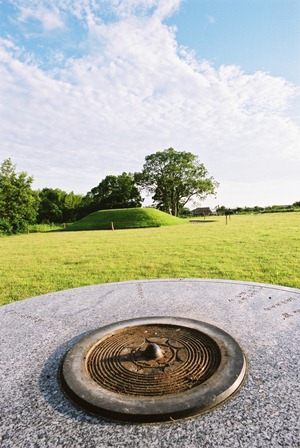 This is a historical park where “Hirabaru Remains,” a national designated
site and “Naikoukamonkyo,” the location of Japan’s largest bronze mirror
which is a national treasure are located. There are murals reproducing
unearthed articles and bench seats, surrounding the mirrors. This is a historical park where “Hirabaru Remains,” a national designated
site and “Naikoukamonkyo,” the location of Japan’s largest bronze mirror
which is a national treasure are located. There are murals reproducing
unearthed articles and bench seats, surrounding the mirrors.
In autumn, visitors enjoy the numerous cosmos flowers planted by local
citizens. The park is a perfect place for picnics.
The remains are reburied now, but a rectangular tomb constructed around
1st or 2nd century, which is 18 meters from east to west and 14 meters
from south to north has been found. 40 huge bronze mirrors were unearthed
from this tomb in 1965. Five mirrors which are called “Naikoukamonkyo”
are 46.5 centimeters in diameter, the largest in Japan. Therefore, it
is estimated that this was the origin of the Japanese Nation.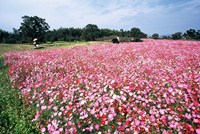
|
| Location |
Arita, Itoshima City |
| Inquiry |
092-323-1111 (Culture Department, Itoshima City) |
| Access |
(From Fukuoka) 2km after turning left at Hatae Intersection on Imajuku
Bypass. |
|
|
| Mikumo Minamishoji Remains |
Gigantic mound that is said to be the possible tomb of the King of Itokoku
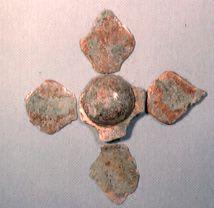 This remain was discovered about 150 years ago. A bronze mirror and a bronze
sword were unearthed here. They have been inherited to a temple in Hakata
and designated as national important cultural properties. This remain was discovered about 150 years ago. A bronze mirror and a bronze
sword were unearthed here. They have been inherited to a temple in Hakata
and designated as national important cultural properties.
In 1975 a new discovery of over 22 bronze mirrors, jade gems, glass gems,
tube shaped gems and gilt-bronze metal ornaments were found.
It is estimated that the mound was built approximately 2000 years ago.
Judging from its gorgeous burial accessories and scale, it is considered
to be the tomb of King Itokoku, the ancient state of Itoshima.
Presently, the remains are reburied with a sign describing its history.
Some of the unearthed articles are exhibited at Itokoku Museum of Historical
Material.
|
| Location |
Iwara, Itoshima City |
| Inquiry |
092-322-7083 (Itokoku Museum of Historical Material) |
| Access |
(From Fukuoka) Approximately 2 km after turning left at Imajuku Hatae Intersection
on Imajuku Bypass.
Get off at Mikumogu Mae bus stop (20minites by bus from JR Hatae Eki Nishi
bus stop).
15 minutes by taxi from JR Hatae Station. |
|
|
| Raizan Sennyoji Dai Hioin |
|
Raizan Sennyoji Dai Hioin
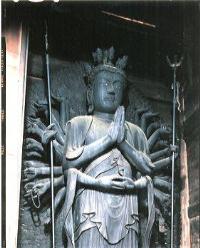
Sennyoji (Sennyo Temple) has around 1300 years of history. Not only it
is famous for the beauty of the trees turning color in autumn, but also
possesses a number of cultural properties such as “Mokuzo Senjukannon Ritsuzo
(wooden statue of Thousand-Armed Goddess of Mercy)” and “Mokuzo Sega Shonin
Zazo (wooden seated figure of Holy Priest Sega),” which are important national
cultural properties, and “Mokuzo Tamon Ten Zo (wooden statue of Vaisravana)”
and “Mokuzo Jikokuten Zo (wooden statue of Dhrtarastra)”, designated cultural
properties of Fukuoka Prefecture.
Mokuzo Senjukannon Ritsuzo (Wooden Thousand-Armed Goddess of Mercy Statue)
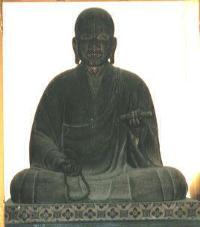
The main Buddhist image of Dai Hioin, has a number of believers and is
estimated to have been constructed about 700 years ago from its configuration.
Most Senjukannon Statues have 48 arms instead of 1000 but this statue actually
has 1000 arms.
Mokuzo Sega Shonin Zazo (wooden seated figure of Holy Priest Sega)
Holy Priest Sega is an Indian high priest who is said to have opened seven
temples in Itoshima including Sennyoji, by the request of Emperor Shomu.
This is a vigorous figure expressing great individuality with high cheekbones
and an open mouth. |
| Location |
626 Raizan, Itoshima City |
| Hours |
9:00 am - 4:30 pm Open throughout the year |
| Inquiry |
092-323-3547 (Raizan Sennyoji) |
| Admission |
400 yen (300 yen for a group of 20 people or more) |
| Access |
30 minutes by bus from JR Chikuzen Maebaru Station. Get off at Raizan Kannon
Mae bus stop.
20 minutes by taxi from JR Chikuzen Maebaru Station. |
|
|
|
|